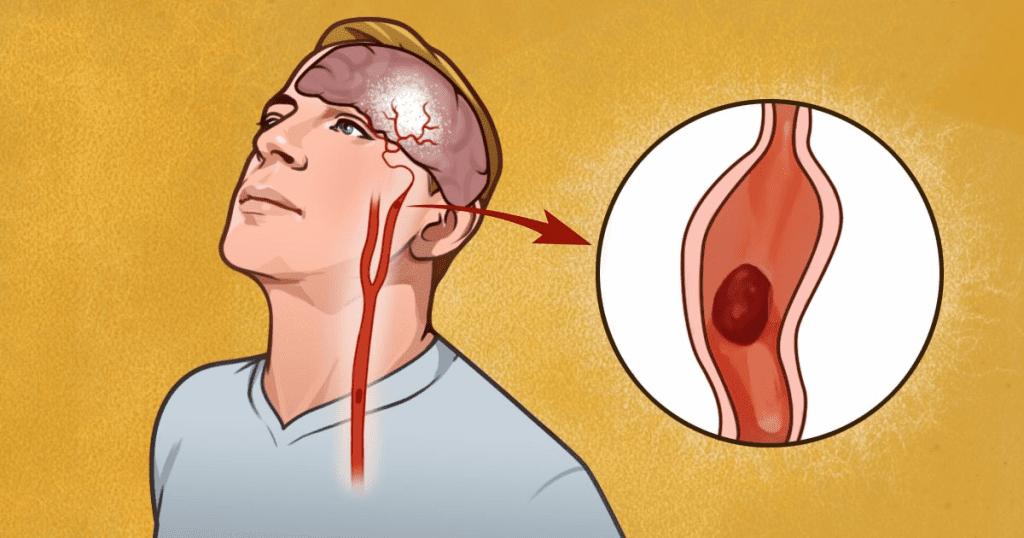A stroke occurs when blood flow to the brain is interrupted, causing brain cells to start dying. This is a serious medical emergency, and quick action can mean the difference between life and death or long-term disability. Although strokes are often associated with older adults, they can affect people of any age. According to MedicineNet, more than a third of stroke patients hospitalized each year are under 65 years old. Key risk factors include high cholesterol, high blood pressure, and smoking. But did you know that a stroke may give early warning signs days, even weeks, in advance? In this article, we’ll cover seven critical early warning signs of a stroke that everyone should recognize.
Understanding the Importance of Early Stroke Detection

The National Institute of Neurological Disorders and Stroke emphasizes that time is critical during a stroke. Rapid treatment can drastically reduce the likelihood of long-term disability or death. By recognizing these early warning signs, you can act quickly, potentially saving someone’s life or preventing severe complications.
1. Face Drooping
One of the first signs of a stroke is often visible on the face. When a stroke affects the brain, it can cause one side of the face to become weak or droop.
- How to Check: Ask the person to smile. If one side of the face doesn’t lift or looks uneven, this could be a warning sign of a stroke. The American Stroke Association suggests this as a quick way to identify facial asymmetry that may signal a stroke.
2. Arm Weakness
Strokes often cause sudden weakness or numbness in the arms, usually concentrated on one side of the body. This symptom might make it difficult for the person to hold or lift their arm.
- How to Check: Ask the individual to raise both arms above their head. If one arm drifts downward or cannot be raised, it’s a significant warning sign. WebMD advises that this simple test can help identify one-sided weakness, a classic stroke indicator.
3. Speech Difficulty
Another key sign of a stroke is slurred or incoherent speech. This can include trouble speaking, slurring words, or difficulty understanding others.
- How to Check: Ask the person to repeat a simple sentence. If their words are slurred, jumbled, or hard to understand, this could indicate a stroke. Healthline suggests that checking for clear speech is an essential part of recognizing a stroke in progress.
4. Sudden, Severe Headache
A sudden, intense headache that seems out of the ordinary can be a sign of a stroke. This headache often appears without warning and can be accompanied by other symptoms like nausea or dizziness.
- How to Check: Ask if the headache feels different from any usual headaches they may have. A stroke-related headache is often described as the worst headache of one’s life, particularly when combined with other symptoms. WebMD notes that while migraines can sometimes mimic this symptom, it’s better to seek medical help if you’re unsure.
5. Vision Changes

Vision disturbances are another possible early sign of a stroke. This can include double vision, blurred vision, or sudden blindness in one eye.
- How to Check: Ask if they’re experiencing any vision changes. Sudden difficulty seeing clearly or losing vision in one eye can signal an impending stroke, according to MedicineNet. Vision changes combined with any other symptoms warrant immediate medical attention.
6. Sudden Confusion
Strokes can interfere with a person’s cognitive functions, causing sudden confusion or disorientation. They may seem unable to understand others or struggle to articulate their thoughts clearly.
- How to Check: Ask simple questions or engage them in conversation. If they appear unusually confused or struggle to respond, this could be a sign of a stroke. The American Stroke Association lists sudden confusion as one of the main warning signs that should never be ignored.
7. Balance and Coordination Issues

A stroke can also affect balance and coordination, making it difficult for someone to stand or walk. They may feel unsteady, dizzy, or have trouble with basic tasks that require coordination.
- How to Check: Ask them to perform simple balance tests, like standing on one foot or walking in a straight line. Sudden loss of balance or difficulty coordinating movements could indicate a stroke, according to MedicineNet.
What to Do If You Notice These Signs: Act FAST
When it comes to stroke, time is everything. The sooner you can get help, the better the chances of recovery. If you notice these warning signs in yourself or someone else, remember the acronym FAST to prompt immediate action:
- F – Face: Is one side of the face drooping?
- A – Arms: Is one arm weak or unable to lift?
- S – Speech: Is their speech slurred or jumbled?
- T – Time: If any of these signs are present, call 911 immediately.
The FAST acronym is widely promoted by the American Stroke Association as a way to quickly assess stroke symptoms and act swiftly.
Preventing Stroke Through Lifestyle Choices

In addition to recognizing the signs of a stroke, taking preventative measures is key to reducing your risk. Here are some proactive steps you can take to lower your chances of having a stroke:
- Monitor Blood Pressure: High blood pressure is one of the leading risk factors for stroke. Regularly monitor your blood pressure and manage it with diet, exercise, and medication if necessary.
- Quit Smoking: Smoking significantly increases the risk of stroke by promoting blood clot formation. Quitting smoking is one of the best things you can do for your overall cardiovascular health.
- Maintain a Healthy Diet: A diet rich in fruits, vegetables, whole grains, and lean proteins can help lower cholesterol levels and maintain a healthy weight. Avoid excessive intake of processed foods, sugar, and saturated fats.
- Stay Active: Regular physical activity strengthens your heart and improves circulation, reducing the likelihood of blood clots. Aim for at least 150 minutes of moderate exercise per week.
- Limit Alcohol Consumption: Excessive alcohol intake can raise blood pressure and increase the risk of stroke. Stick to moderate drinking—up to one drink per day for women and up to two for men.
Conclusion: Early Detection is Key to Stroke Prevention
Understanding the early warning signs of a stroke and taking action can make all the difference. From sudden face drooping to unexpected confusion, these symptoms should never be ignored. Acting quickly by recognizing the signs and remembering FAST can save lives and improve recovery outcomes. Preventative steps, such as maintaining a healthy lifestyle, managing risk factors, and seeking regular checkups, further support stroke prevention. Make sure you and your loved ones know these signs—being prepared can help you act swiftly and confidently in the event of a stroke.


